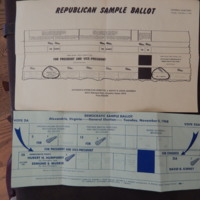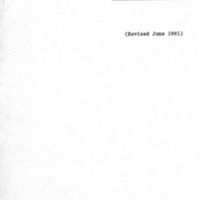Browse Exhibits (2 total)
A Look at President Richard Nixon

Richard Nixon is one of America’s most recognizable presidents. But, unlike the other few who share this title, Nixon is often not remembered for his work as a politician. Ask anyone who Richard Nixon is and they might say, “That’s the Watergate guy, right?” While he was indeed guilty of illegal activities and deserves many of the harsh criticisms historians and the public have placed upon his legacy, Nixon ran successful campaigns for Congress and twice for President in an era when American politics and its relationship to the public was experiencing a major shift.
What surprises many, “Nixon, son of a western farmer and grocery-store owner, had struggled his way up, working through college, living sparely in a garage apartment. His story reflected the idealized ‘American Dream,’” resembling many aspects of Abraham Lincoln’s rise. Nixon sometimes referred to Lincoln in his speeches.
First serving in Congress (in both the House and the Senate), then as Vice President to Dwight D. Eisenhower, Richard Nixon had a successful career. Despite his early success, his public image began to falter starting with the first televised presidential debates during the 1960 election. Richard Nixon appeared disheveled and sweaty, his opponent John F. Kennedy was more “camera ready.” Young and energetic Kennedy defeated the experienced Nixon by a slim margin. He then unsuccessfully ran for governor of California in 1962 against incumbent Pat Brown. Finally, in 1968, amid an intensified Vietnam War, heated protests at the Democratic National Convention, and the assassination of two influential public figures (Martin Luther King Jr. and Robert F. Kennedy), Richard Nixon defeated Hubert Humphrey for president. He ran for reelection in 1972 defeating opponent Georger McGovern in a landslide. Unfortunately, shortly after his election, the Nixon administration began cover-ups for the break in at the DNC headquarters in Washington D.C. In 1974, after an FBI investigation and an intense court battle, Richard Nixon resigned the presidency.
Richard Nixon is a nuanced figure in American history who, like the Founding Fathers and those assassinated shortly after reelection, is reduced to a one-dimensional figure (although Nixon is remembered for his faults rather than his successes). By focusing on his initial campaign and his bid for reelection, we look beyond the scandal-doer and highlight a few distinct aspects of the work and successful campaigns of the 37th president, Richard M. Nixon.
A sample ballot for the 1968 election marks the starting point of the exhibit and gives a general background to the time. We then turn local, showcasing a photograph of Richard Nixon in Springfield. The posters - for the 1972 election and "Coolness" - and the button collection serve to highlight issues that have always haunted Nixon: The public's views on his person and a slightly paranoid handling of the press. The "War on Drugs"-pamphlet retells one aspect of Nixon's politics that would prove very long-lasting. We conclude the exhibit with a look at the eventually unfortunate duo "Nixon/Agnew", as neither of them end up leaving office gracefully.
Integration into the Workplace

It is necessary for jobs to integrate their employees into the workplace, its rules and regulations, and its culture. Depending on a job and its requirements, there are a variety of ways—some more involved than others—in which workers can become accustomed to or a part of workplace practices. Recording such methods in an archive allows for the recognition of the diversity of these practices and how they have shifted over time.
This collection represents papers and documentation that welcome and orientate individuals to the workforce. Included in this collection are orientation documents that establish the Andersen Consulting dress code in the 1990s. This dress code details the standards of appearance and dress for women working for Andersen Consulting. Next is a stock (share) of ownership in the Boston Celtics from the late 1980s. This stock was available for purchase in the gift shop of the Boston Garden, and is a true share of ownership for the Celtics. Third is a license given to an individual to welcome them to the Aiken County Sheriff's Department. This particular license is for the Detention Division of the Aiken County Sheriff’s Department, which covers Aiken’s detention center. The fourth and final item in this collection is a program for the inauguration of the Illinois Senate from January 2023. This program lists all the Senators of the 103rd Illinois General Assembly.
References:
Basketball Reference. “Boston Celtics Franchise Index.” Accessed November 7th, 2024. https://www.basketball-reference.com/teams/BOS/.
Charles Schwab. “What Are Stocks.” Accessed November 8th, 2024. https://www.schwab.com/stocks/understand-stocks.
Keck, Patrick M. “State legislators sworn in, 103rd Illinois General Assembly begins.”The State Journal Register (Springfield, IL), Jan 12, 2023. https://www.sj-r.com/story/news/politics/state/2023/01/12/state-legislators-sworn-in-103rd-illinois-general-assembly-begins/69798849007/.
Lang, Robert M. “The Hidden Dress Code Dilemma.” The Clearing House 59, no. 6 (1986): 277–79. http://www.jstor.org/stable/30186540.
